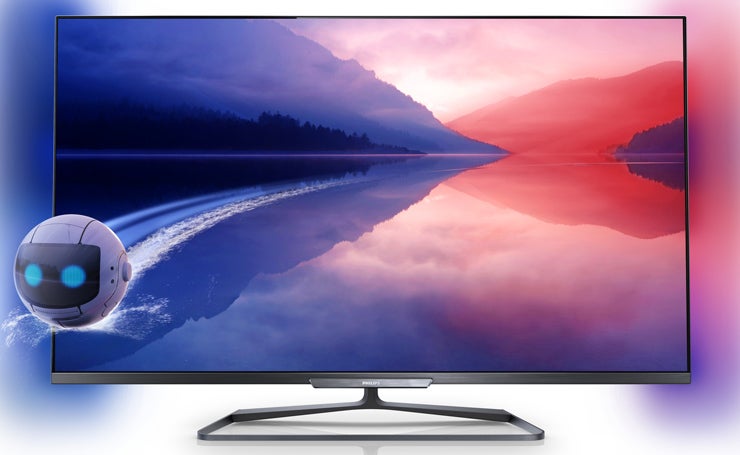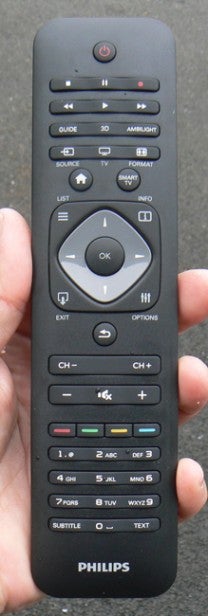Philips 42PFL6188S Review - Picture Quality Review
Picture Quality
A strong performing mid-range 42-inch TV.

Sections
- Page 1 Philips 42PFL6188S Review
- Page 2 Picture Quality Review
- Page 3 3D, Sound and Verdict Review
The 42PFL6188S joins the 42PFL6008 in applying Pixel Precise HD processing to its pictures. This is Philips’ second tier of video processing, sitting below the doubly powerful Perfect Pixel HD system used on Philips’ high-end TVs. But Pixel Precise HD still has the power to extend its tendrils with reasonable success into many aspects of the TV’s picture performance.
 You do, though, have to be careful with the settings you use for the various elements of Pixel Precise HD’s machinations. For instance, all but the lowest power setting of the Perfect Natural Motion system can leave motion looking unnaturally fluid and accompanied by processing aretfacts like haloing and flickering.
You do, though, have to be careful with the settings you use for the various elements of Pixel Precise HD’s machinations. For instance, all but the lowest power setting of the Perfect Natural Motion system can leave motion looking unnaturally fluid and accompanied by processing aretfacts like haloing and flickering.
The Advanced Sharpness tool, meanwhile, is best avoided altogether, as it can leave pictures looking bitty and fizzy, especially if applied to HD sources. And the Dynamic Backlight setting is best set to its Standard or even Off mode if you don’t want pictures to suffer with distracting amounts of shifting brightness levels when watching dark material.
To add to your workload, if you really want to get the best of Pixel Precise HD it’s worth tweaking various of its components to suit different source types, rather than just adjusting things once and then leaving them alone.
This arguably puts more of a burden on the Philips 42PFL6188S to perform well, to make sure your set up efforts are fully rewarded. So it’s a relief to find that this is exactly what it does.
Watching HD tuner feeds (alright, yes, we mean The Ashes for much of the time…) the first two strengths of the Philips 42PFL6188S’s pictures we clocked were their high brightness levels and impressive sharpness, which are both strong enough to immediately set the mid-range TV apart from budget models.
You do have to work at the sharpness a little by deactivating the set’s noise reduction circuitry and toning down the contrast setting from the default value used by many of the provided contrast settings. We’d also recommend turning off the Advanced Sharpness component of the Pixel Precise HD processing engine, as this can leave images looking noisy and ‘stressed’, and you shouldn’t feel tempted to used the Perfect Natural Motion circuitry on anything higher than its lowest power level (or not at all with Blu-rays) if you don’t want the image’s natural clarity to be damaged by sporadic unwanted processing side effects.
Although this sounds complicated, it doesn’t really take long to get everything set up right.
The Philips 42PFL6188S’s motion handling is slightly superior to that of the 42PFL6008, in that the lowest setting for the Perfect Natural Motion engine delivers a slightly cleaner feel to the post-processed image. There’s a touch more clarity to motion, too, even if you’re not using the processing system, though the difference here is marginal.
As a side point here, it’s worth adding that the motion processing on the Philips 42PFL6188S suffers more with unwanted side effects than the system on the Philips models that employ the more powerful Perfect Pixel HD system.
Further scrutiny of the 42PFL6188S’s images reveals that their colour response is also very good for a reasonably affordable mid-range 42-inch set. Tones are vibrant and richly saturated but also impressively natural in tone when required and full of finesse when rendering infinitely subtle content such as skin tones, football pitches and, of course, cricket pitches.
The strengths described above serve the 42PFL6188S well, too, with HD
movie viewing. If anything the set’s colour talents are even more
appreciable when unleashed on trciky toned, often dark fare like The
Hobbit and Tim Burton’s Sweeney Todd, especially as the colour accuracy
and finesse continues even when you’ve got very deep colour tones in the
darkest parts of the picture.
This would not be possible if the 42PFL6188S didn’t also possess a credible black response. But aside from the Philips 47PFL6008,
it’s pretty much the only TV this year to use a passive 3D IPS panel
that’s been able to deliver a black level performance good enough to let
you watch dark scenes without feeling distracted by the amount of grey
clouding hanging over them.
There’s
a little very subtle clouding in the image’s corners during dark scenes
(especially while watching 3D), but this is relatively inoffensive
compared with many rival edge LED TVs around this year.
As you would expect given its mid-range status, the Philips 42PFL6188S’s
pictures are not perfect. Some areas of exceptionally fine detail –
often jackets and beards! – can look a little shimmery. The set’s black
level response, while good by passive 3D TV standards, isn’t as profound
either as that witnessed on a few of the best active 3D LCD TVs around,
and is not in the same league as that witnessed on some of this year’s
plasma TVs, but it’s still very good for the money.
How we test televisions
We test every TV we review thoroughly over an extended period of time. We use industry standard tests to compare features properly. We’ll always tell you what we find. We never, ever, accept money to review a product.

